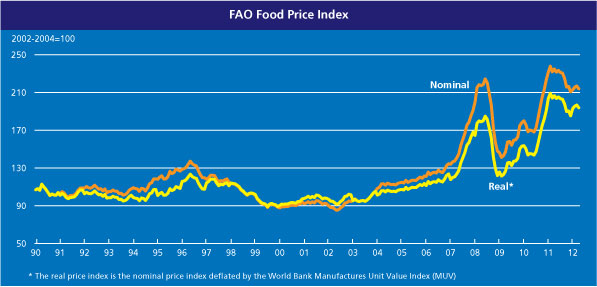Why Agriculture
Most countries are becoming acutely affected by a more globalised economy and the competitive affect this has on prices across all sectors. This is magnified for poorer countries were their purchasing power is not in such parity with global prices. Food security is very much the bedrock for a countries sustained economic growth.
A growing World Population means that there are an additional 150 mouths to feed every minute (FAO). Unfortunately the agricultural production rate has not caught up and there is now a significant gap in supply and demand leading to price rises in food. This in turn is creating a World Wide boom in agricultural investments. The World Bank says demand for food must increase by 50% by 2030, yet the land on which that massive increase in yield is to be achieved has halved per head since 1950.
According to a recent report by the OECD and UN Food and Agriculture Organization (reported in The Daily Telegraph 28/10/10) the prices of wheat and other arable crops will rise by between 15% and 40% in real terms by the end of this decade. Assuming a rate of inflation of 2%, this equates approximately to a rise in money terms of between 35% and 60%. The reasons for this expected rise are well-known. First, the world population will continue to increase; and every new mouth needs to be fed. Second, economic growth in Asia is causing rising demand for meat; and every kilo of meat requires several kilos of grain as livestock feed. Third, while agricultural productivity will rise, it cannot keep pace with rising demand.
The price of agricultural land is directly connected with the price of the crops grown on it, combined with expectations of further rises. And while crop prices are prone to short-run fluctuations, caused by variable harvests and speculation, land prices tend to rise in a more stable fashion. Moreover, the amount of agricultural land in the world is relatively fixed.


